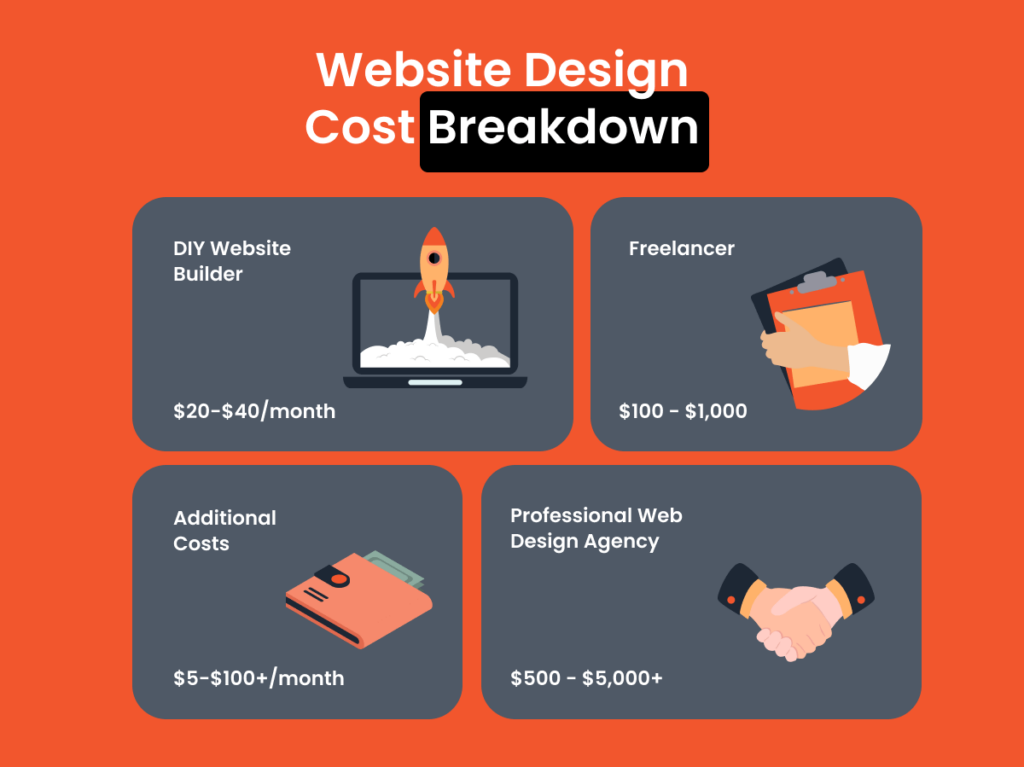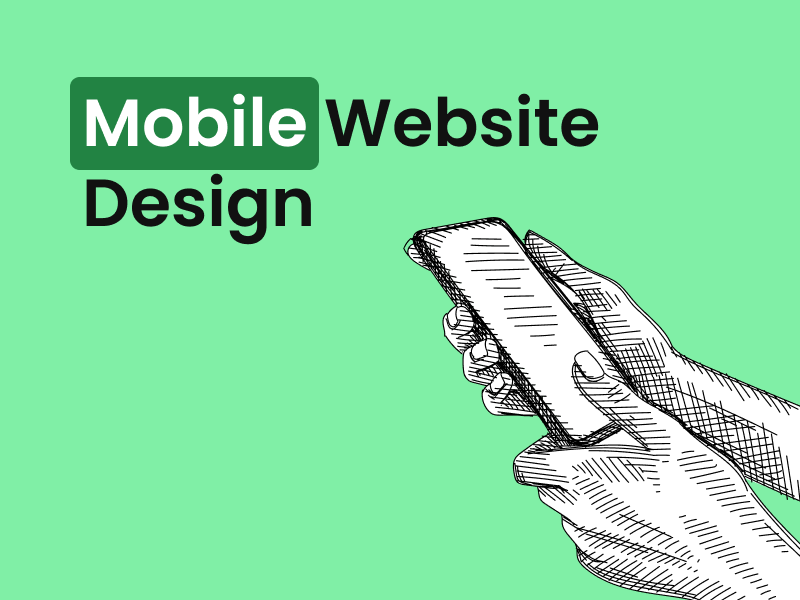Understanding the Average Cost of Website Design for Small Businesses

By Melissa Ng | Last Updated 18 March 2024
Having a website is important for small businesses. It’s where customers learn about what you offer and how they can buy from you. But, how much does it cost to make a website? This article talks about the costs of designing a website for small businesses in Australia. We’ll look at different prices, from doing it yourself to hiring experts. Knowing these costs helps you plan better and make sure your business does well online.
What Influences the Cost of Website Design?

The cost of making a website can change a lot. It depends on what you need. Here are some things that can make the cost go up or down:
Customisation: Imagine you want a website that stands out, maybe with a unique layout or special features that nobody else has. This kind of work takes more time and skill, so it will cost more than if you chose a standard template design that’s easy to set up.
Functionality: Think about what you want your website to do. For example, a simple website with just a few pages for your local bakery will cost less than a site where customers can order and pay for bread online. More functions mean more work, which increases the price.
Design Complexity: A website with a single page and a few photos is quicker to make and costs less. But if you want lots of pages, with different designs for each, or features like a photo gallery or a blog, it’s going to take more time and push up the cost.
Content Creation: If you need help writing text for your site or want professional photos or videos, you’ll have to pay extra for someone to create this content for you. Good content can make a big difference, but it does add to the cost.
E-commerce Functionality: If you’re planning to sell things directly from your website, you’ll need a shopping cart and a way to accept payments. Setting up these features is complex and requires secure technology, so it increases the price. Check out our blog post for some Shopify inspiration: 2024 Shopify Showcase: Top Store Examples & Website Success Stories.
Maintenance and Updates: Just like a car, a website needs regular check-ups to make sure it runs smoothly. This might include updating the software, adding new content, or fixing any problems that pop up. This ongoing work is crucial but does add to the overall cost.
For example, a small business owner who wants a simple site to showcase their services might spend around $500, while another business looking to sell products online with custom design features could be looking at $3,000 or more.
Remember, what you pay for is what you get. Investing in a good website design can help attract more customers and grow your business.
Average Cost Breakdown for Small Business Websites

Let’s talk about what you might need to spend:
DIY Website Builders: Think of tools like Wix or Squarespace as your friendly neighbourhood café – easy to pop into and you get what you see. They’re pretty wallet-friendly, costing about $20 to $40 each month for a variety of templated designs. Great for getting started without breaking the bank, but sometimes you might want a coffee (or website) that’s a bit more tailored to your taste, and that’s where their limits show up.
Hiring Freelancers: Now, imagine finding someone who can brew the perfect cup just for you. That’s your freelancer. They can whip up a website that fits just what you need, but depending on how fancy you want your ‘coffee’ (website), it could set you back anywhere from $100 to $1,000. The price swings based on how elaborate your requirements are. Say, do you want a simple espresso (a basic site) or a full-blown mocha frappuccino with extra whipped cream (a site with all the bells and whistles)?
Engaging a Professional Web Design Agency: Here’s where you’re walking into a high-end coffee shop. You’re looking for premium, and you’re willing to pay for it. With costs starting from $500 to $5,000 or more, partnering with a professional agency is like asking a world-class barista to create a signature blend for you. It’s pricier, sure, but you get a blend (website) that’s crafted to perfection, just for your brand.
Additional Costs: Let’s not forget the ongoing ingredients that keep your website fresh and inviting – hosting (like the rent for your café’s space, roughly $5 to $100 a month), buying a domain name (the sign above your café, about $10 to $20 a year), and SEO services (like the marketing that brings people to your coffee shop, and this can vary a lot in price). These are the essentials that keep your website running smoothly and ensure people can find you.
Just like running a café, building a website comes with its set of costs, from the basics to the extra froth on top. But remember, whether you’re serving coffee or creating a website, what matters most is meeting your customers’ needs and making sure they have a great experience.
How to Budget for Your Small Business Website

Planning is key. Consider the essential functions your site must do to meet your business goals. Start by focusing on these foundational features to manage costs effectively. As your business grows, you can slowly introduce additional features that enhance your site’s functionality or user experience.
It’s also crucial that you account for recurring expenses, such as website maintenance and hosting services, in your budget. These ongoing investments ensure your site remains secure, functional, and up-to-date, which is vital for sustaining your online presence and supporting your business’s long-term growth.
Tips for Reducing Website Design Costs

Cutting costs on website design doesn’t mean you have to compromise on quality. Here are a few smart ways to keep your expenses in check:
Use templates or themes: Starting with a template or theme is like buying a house that’s already built and then customising it to your taste. It’s much cheaper than building from scratch. You can find a wide range of affordable or even free options that look professional and can be adjusted to suit your brand.
Focus on must-have features first: It’s easy to get carried away with all the fancy features you might want on your website. But to keep costs down, concentrate on what you really need to start. For instance, if you’re a bakery, make sure you have a great menu and a contact page. You can always add an online ordering system later when you’re ready to expand.
Give clear instructions to your designer: Imagine telling a builder to start constructing your house without giving them the plans. Changes made after construction has started can be costly. The same goes for website design. Clear instructions from the start can prevent expensive revisions.
Think about adding new features in stages: Just like you might move into your new home and then plan out future renovations as your budget allows, approach your website the same way. Start with a solid foundation and then build on it. This approach not only spreads the cost over time but also lets you learn what your customers really value on your website, so you invest in features that will make the most impact.
By adopting these strategies, you can manage your website design costs more effectively, ensuring you get the online presence you need without breaking the bank.
Importance of Quality Over Cost

When it comes to your website, quality really matters. A well-made site can attract more customers and boost your sales. It’s like choosing a durable, reliable tool over a cheap one that breaks easily. Investing a bit more upfront for a quality website pays off.
A user-friendly and visually appealing site not only draws people in but also encourages them to stay longer and explore what you have to offer. This can lead to more enquiries, bookings, or sales.
Plus, a great website helps build trust with your visitors. They’re more likely to believe in the quality of your products or services if your website reflects professionalism and attention to detail. So, while keeping an eye on costs is important, remember that the value a high-quality website brings to your business is worth the investment.
Thinking About AI Website Designers? Here’s Why a Real Designer is Better

AI website builders might seem like a quick and cheap way to get a website up. They do the job fast, but often, that’s not enough. Imagine you’re trying to fit a square peg in a round hole. That’s kind of what using AI to design your website can feel like. It doesn’t really get what makes your business special or what your customers like.
A real person designing your website does more than just put things together. They listen to you, figure out what your business stands for, and then make a website that shows that to the world. Your business isn’t just like any other, so your website shouldn’t be either.
AI might give you something that works, but a designer gives you something that shines. They make sure your website is easy for your customers to use and nice to look at, too. So, while AI seems cheaper at first, a designer is worth the extra cost because they make your site just right for your business. This means more happy customers and better sales for you in the long run.
Conclusion
Knowing how much a website costs helps you plan and spend your money wisely. Think about what your business needs and start simple. A good website is an important part of your business, so it’s worth getting it right.
Your free website design offer
Ready to make your business stand out without breaking the bank? At AppSalon, we’re currently offering Australian businesses a fantastic opportunity: a free design from our premium design agency.
Don’t miss out on the chance to give your website that professional touch, absolutely free. This special offer won’t last forever, so get in touch with us today and let’s create something amazing together. Your standout website is just a call away with AppSalon.
Submit An App
Seen a cool app you think we should review? Submit your recommendation using our form.


